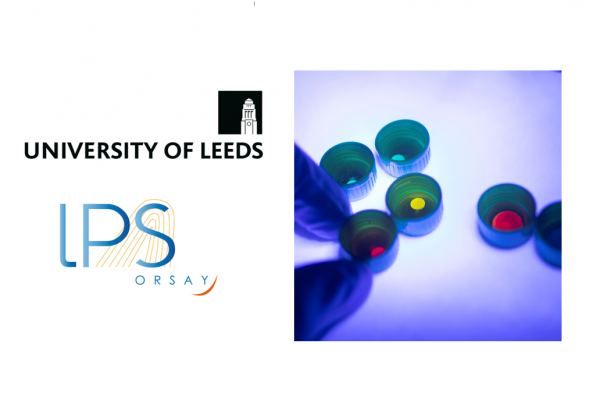TA Success Stories: Metal halide perovskites in metal-organic frameworks for light emitting diodes, from the University of Leeds to LPS Orsay

Many successful projects stem from transnational access provided by ESTEEM3. This week, we focus on the “Metal halide perovskites in metal-organic frameworks for light emitting diodes” project from University of Leeds (United Kingdom) which was granted access to the International Laboratoire de Physique des Solides (LPS) at the CNRS (France) one of the ESTEEM3 TA provider.
The “Metal halide perovskites in metal-organic frameworks for light emitting diodes”, proposed by Dr Sean Collins from the University of Leeds(UK), focused on developing new materials for durable, high-efficiency lighting.
The project was granted access to facilities and expertise of the InternationalLaboratoire de Physique des Solides (LPS) at the CNRS in Paris (France) in Winter 2019, as part of the transnational access campaign of ESTEEM3.
Introduction
Lead halide perovskite materials exhibit exceptional properties for optoelectronic applications from solar energy to lighting. Fully inorganic varies such as CsPbX3 (X = Cl, Br, I) hold particular promise for light emitting diodes, offering bright and narrow linewidth luminescence characteristics, important for achieving efficient and colour-pure light. However, these materials can be easily damaged on exposure to heat, water, or light. Here, in order to improve the durability of halide perovskites, we developed a composite material consisting of a metal–organic framework (MOF) glass containing lead halide perovskite nanocrystals. These new materials boost the luminescence quality and durability under exposure to heat, light, ambient moisture, and immersion in a variety of solvents. The fabrication approach uses powder processing techniques and simple precursors, and the resulting material self-sequesters toxic lead species to reduce environmental impact.
Main results
Through ESTEEM3 access, we were able to obtain cathodoluminescence (CL) measurements in the scanning transmission electron microscope from individual nanocrystals within the MOF glass matrix. The ability to achieve nanometre spatial resolution in CL with the sample cooled to liquid nitrogen temperatures was crucial to record emission spectra from individual grains within the composite. The CL results showed narrow-band red light emission in CsPbI3 crystals, providing direct evidence of the targeted crystal phase and optoelectronic properties in the glass composite.
Successful outcomes
Dr Sean Collins and Dr Luiz Tizei published an article arising from this accesswith colleagues from the University of Cambridge (UK) and the University of Queensland (Australia) in the journal “Science” entitled “Liquid-phase sintering of lead halide perovskites and metal-organic framework glasses” (https://doi.org/10.1126/science.abf4460).
Interested in Transnational Access to the leading European state-of-the-art Transmission Electron Microscopy (TEM)? Find out more about the procedure here!
